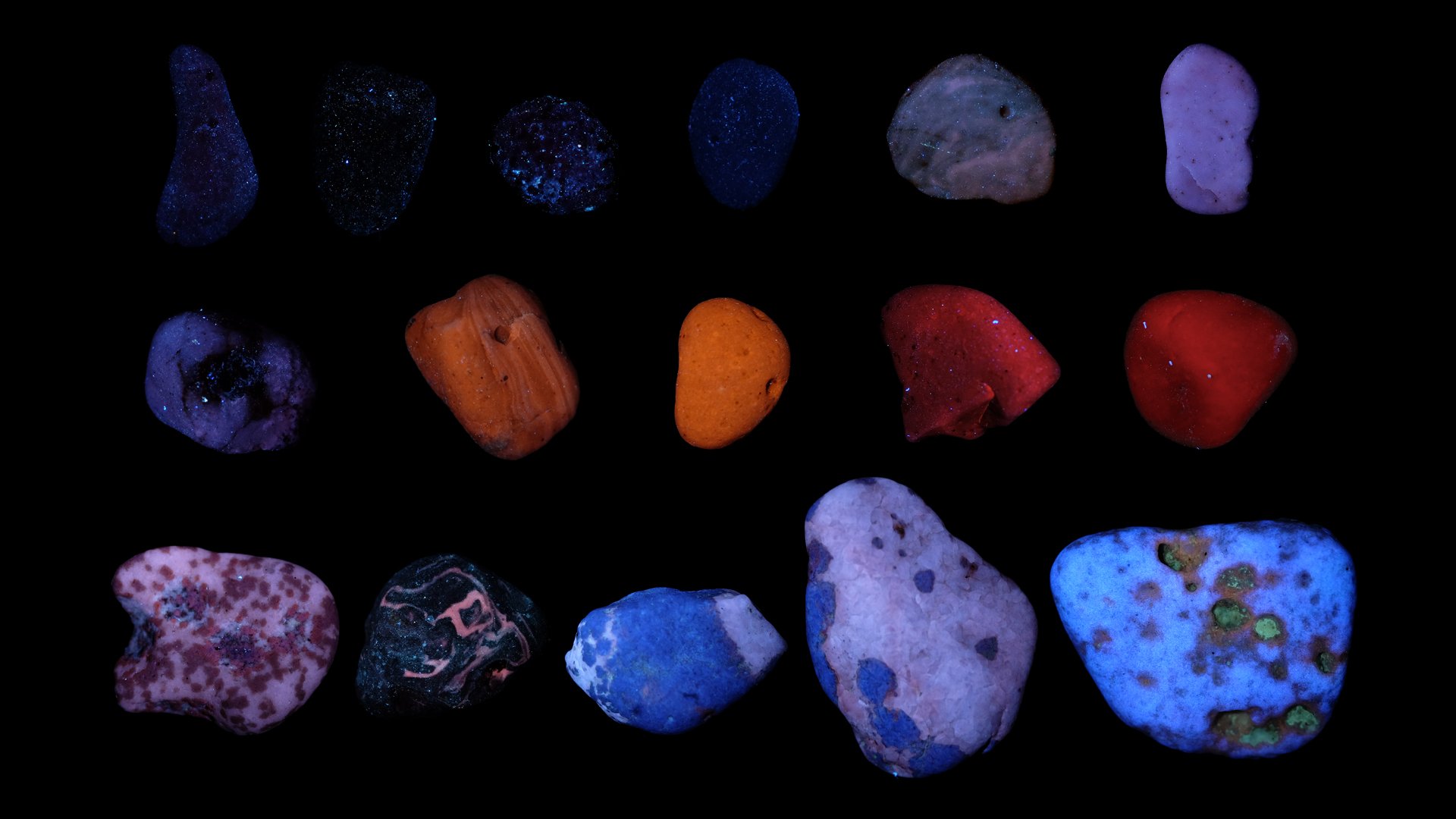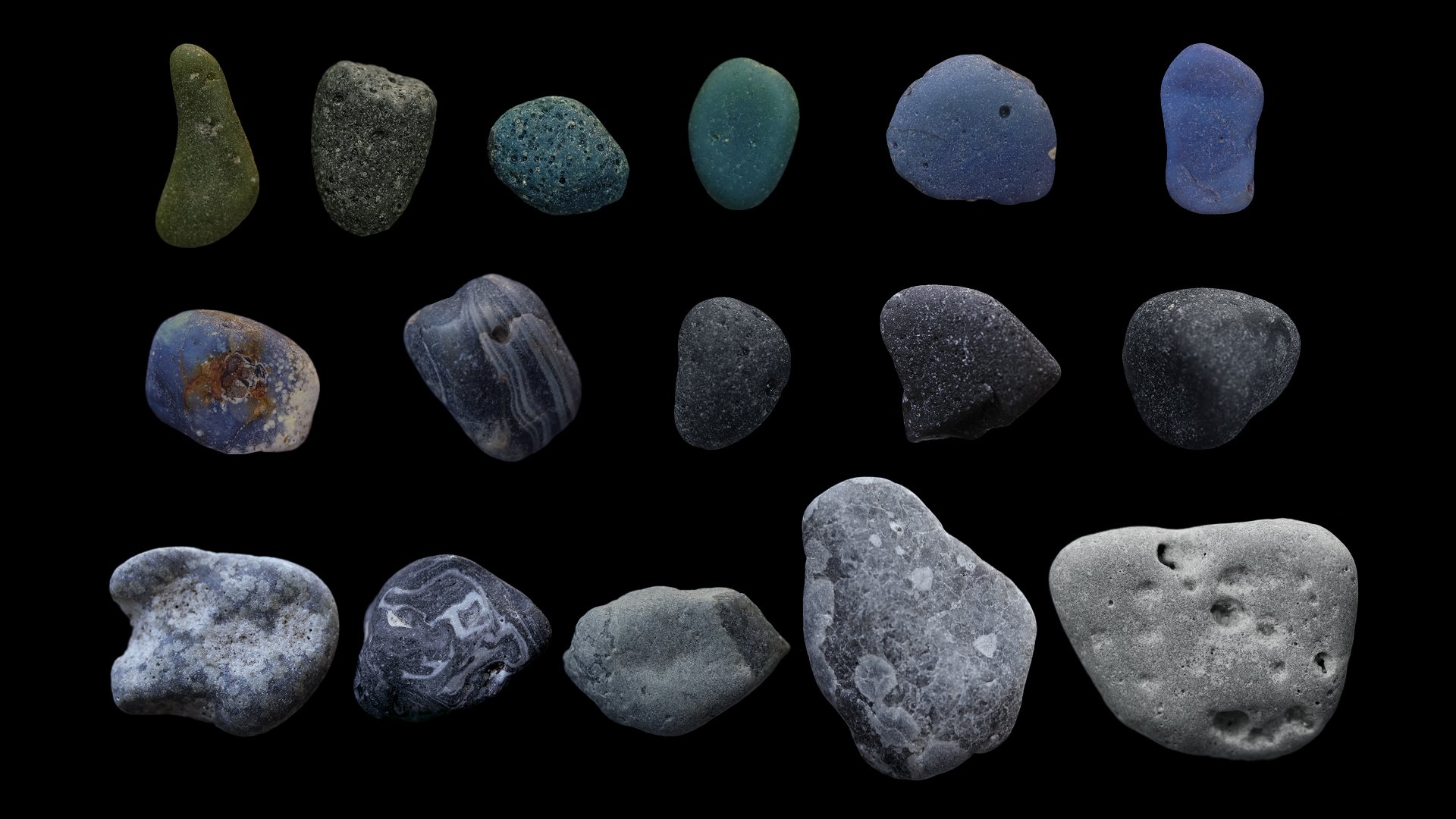Leland’s shores shine after dark: Michigan Rockhounds team discovers fluorescent treasure on famous beach
The Michigan Rockhounds administrative team discovered abundant fluorescent slag glass on Van’s Beach in Leland Michigan in May of 2022.
If anyone else knew of it, then it’s the best kept secret on Michigan’s western shore: Van’s Beach is covered with fluorescent slag glass, shining brilliant shades of red, pink, violet and orange under the glow of a 365nm ultraviolet light. While walking the shore in search of fluorescent sodalite, the administrative team of Michigan Rockhounds was surprised to find an array of colors radiantly shining back at them. Calcite is sometimes white under the UV lights and the famously sought-after fluorescent sodalites, sometimes called yooperlites or other names such as glowdalite, glow a bright oft-speckled orange. A host of blues, violets, pinks, reds, oranges and yellows unexpectedly shone back during the evening expedition. The team collected dozens of specimens and studied them under both UV and visible light: most of these pieces are slag glass from historic Leland iron smelting operations.


Leland is famous for its slag glass— the infamous Leland Blue is a gorgeous byproduct of the iron smelting that once took place on its shore during the late 19th and early 20th centuries. In an era when there was virtually no concern for the environment, the slag glass waste from the smelting operations was dumped into Lake Michigan where it can continue to be found today, washing onto the shore at and around Van’s Beach.
Leland Blues are famous for their vibrant blue color, but in fact the Leland slag comes in a host of colors— often deep greens and purples. The majority, in fact, is quite colorless and easily ignored. But this is where the Michigan Rockhounds team was truly surprised- the most radiant and spectacular pieces to glow under the UV light were some of the dullest and least interesting pieces under visible light. They are literally the stuff no one would ever consider collecting in the daylight.
This dichotomy between spectacular color under UV and drab appearance under visible light mirrors in many ways what makes the famous fluorescent sodalite, or yooperlite, so sought after. The similarities continue: the key element that allows fluorescent sodalite to glow is disulfide, a variety of sulfur. In Leland Blues, their characteristic rich blues and greens are caused by varieties of sulfur as well. It is very likely that that these same elements are also impacting the fluorescence of the slag, though other colors under UV such as violet and blue may be caused by other elements, including lead or iron.
Many of the fluorescent reds that appear on the shores of Leland under ultraviolet light are chert, which can have a blue coating (causing them to be mistaken for Leland Blues) of manganese oxide that glows red under a UV light. Bright whites are typically calcite, often revealing fossils trapped in limestone that you can’t see under visible light. And it bears mentioning that the team also found what they sought out in the first place: Van’s beach does have a decent number of fluorescent sodalites— or yooperlites- mixed in with its stones.
The implications of this discovery go well beyond the shores of Leland, however. It is not only possible, but very likely that other beaches known for their abundance of slag glass will have similarly fluorescent glass that has never been recognized before.
The beaches of Leland and all around Michigan are about to get very busy after dark; there are radiant and colorful treasures to be found along those shores under the barely noticeable glow of 365nm UV lights!
READ MORE: The Blues After Dark: The Fluorescent Secrets of Leland









